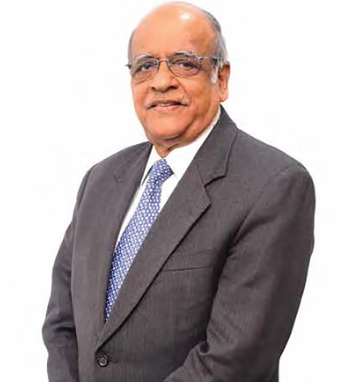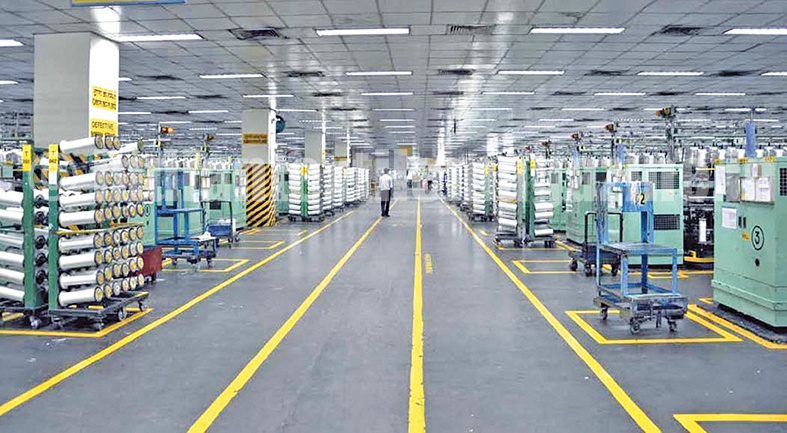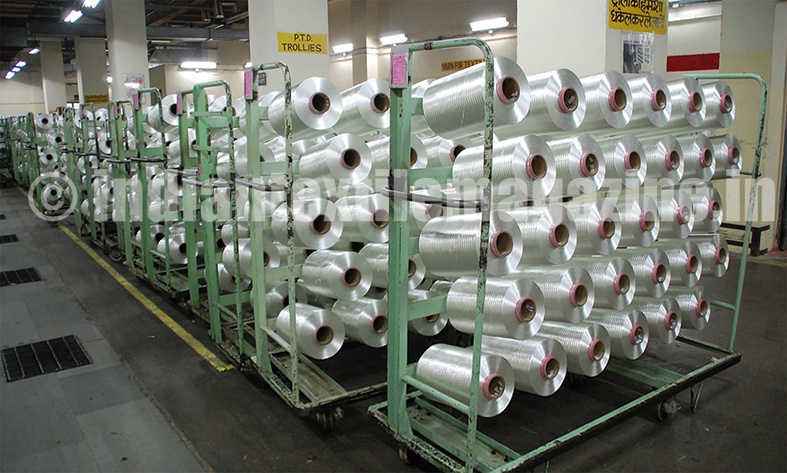A multi-business entity SRF is today well recognised and respected for its R&D capabilities of global magnitude, especially in the niche domain of chemicals. Building on the strength of its diversified business portfolio, SRF is well on its way to transforming itself into a technology and innovation-oriented company. It remains the market leader for most of its products in India and continues to enjoy significant global presence in some of its businesses, with operations in India, Thailand and South Africa and commercial interests in more than 75 countries. The company classifies its main businesses as Technical Textiles Business (TTB), Chemicals & Polymers Business (CPB) and Packaging Films Business (PFB).

“A multi-business entity like ours has the ability to withstand business-specific downturns and can develop individual strategies for each segment. In sync with our strategy to transform SRF into a technology & innovation oriented company, we made investments of around Rs. 3,200 crores across all business segments in the last five years. More than 50% of these investments were made in the chemicals business alone. We have plans to spend around Rs. 3,500 crores in the next four years of which almost 70% is earmarked for the chemicals business,” states Mr. Arun Bharat Ram.
In spite of the soft demand situation across all segments and continuing volatility in commodity prices, TTB as a whole performed reasonably well in a dynamic competitive environment.
SRF’s nylon tyre cord fabrics (NTCF) business continued to retain leadership in the domestic market even as demand remained subdued. While NTCF remains a significant product for the next few years, the company would continue to enlarge its portfolio of other product segments such as coated and laminated fabrics under the technical textiles business.
The polyester yarn & fabrics segment turned around with its new focus on the yarn business for diversified industrial applications.
As for belting fabrics, in the current global economic scenario, SRF changed its strategy for this business segment by targeting domestic markets and expanding its range of value-added products. This, coupled with a reduction in turnaround time for orders, enabled it to sustain its performance in India.
In coated & laminated fabrics, the laminated fabrics segment performed satisfactorily in a tough competitive environment. Movement towards static covers and fabricated articles would help keep ahead of the industry. The coated fabrics segment also turned around during the year, particularly in the off-season as well. The ongoing focus on becoming a ‘Solution Provider’ along with the branding initiatives aimed at positioning the business as a ‘value added entity’ helped enhance the prospect of greater profitability.
SRF continues to hold its position in different applications of industrial yarns with stable performance.
Technology absorption
The R&D centre of Technical Textiles Business of SRF is located at Manali, near Chennai. Equipped with state-of-the-art pilot facilities and sophisticated testing laboratories for evaluating Polymers, Fibres and Coated fabrics, the centre aims at maximising competitiveness of the technical textiles business through market-oriented new product and technology development.
Many products were developed by the R&D centre last year, out of which four coated fabric variants were commercialized along with one new Nylon-6 Polymer variant for engineering plastics application and a polyester fabric for tyre cords. Apart from this, the centre is also engaged with leading Academic and Research Institutes in India and abroad for various research projects.
Operations review
Net revenue from operations of the company on standalone basis increased marginally by 0.91 per cent from Rs. 3,613.99 crores in 2014-15 to Rs. 3,646.82 crores in 2015-16. Profit before interest, depreciation and tax (PBIDT), including ‘other income’ on a standalone basis, increased from Rs. 701.62 crores to Rs. 837.26 crores. Profit before tax (PBT) on a standalone basis increased by 25.58 per cent from Rs. 396.11 crores to Rs. 497.45 crores, while profit after tax (PAT) on a standalone basis moved up by 17.27 per cent from Rs. 307.73 crores in 2014-15 to Rs. 360.87 crores in 2015-16.
Outlook
Nylon tyre cord fabrics (NTCF) consumption in India is likely to remain flat in 2016-17 in spite of increasing radialisation. Entry of a new player may lead to a reduction in margins. The company, however, expects to maintain its share.
The fortunes of the laminated fabrics segment are likely to be similar in 2016-17 with aggressive marketing of hot lamination products. In the coated fabrics segment, the domestic market share is expected to improve through appointment of new channel partners and reduced turnaround time for fabricated articles. The prospect of a resolution of the long pending issues with regard to mining and infrastructure projects, in particular, augurs well for belting fabrics which are essentially used as reinforcement in conveyor belts.
The company hopes to be in a position to leverage the potential demand growth through additional sales.

